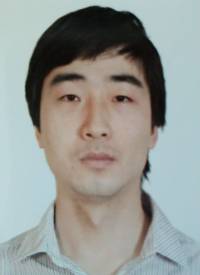Seed Grants Awarded 2024
Next Generation Diagnostic Tests for Radiation Tolerant AI Hardware
 |
 |
| Peter Milder SBU, Electrical and Computer Engineering |
Dmytro Nykpanchuk BNL, CFN |
Abstract:
There is increasing reliance on artificial intelligence (AI) hardware in critical
applications such as military, space, and nuclear environments. Such extreme environments
are prone to damage from radiation, which significantly affects the reliability of
the electronics. Traditional radiation analysis and test methods have evaluated the
impact of radiation on data and transistor characteristics. These methods are not
sufficient for emerging AI hardware where system-level inference accuracy is typically
the most important objective. The specialized cross-layer expertise in AI hardware
at SBU, coupled with the expertise on radiation effects and advanced testing facilities
available at BNL, creates a unique opportunity. We plan to obtain experimental data
via the NASA Space Radiation Laboratory (NSRL) at BNL. NSRL is a unique facility that
simulates the high energy cosmic rays found in space by extracting beams of heavy
ions from the AGS Booster Synchrotron.
The goal of this research is to adopt a top-down approach in evaluating the impact
of radiation on AI hardware. The proposed approach will investigate radiation effects
on FPGA-based AI architectures executing application tasks in real time. We will target
single event effects such as single event upsets that cause bit-flips on stored data
and single event transients that cause current spikes during signal propagation throughout
the chip, and longer term effects such as total ionizing dose that affect the characteristics
of the transistors such as threshold voltage. Although extensive research has been
conducted to understand the impacts of radiation on materials, devices, and low complexity
circuits, it is highly challenging to connect these effects directly to the inference
accuracy of AI applications that are executing on highly complex architectures. In
this research, we will target this challenge by leveraging our previous work on fault
tolerant AI hardware, modeling, and the experimental data we will obtain through NSRL
at BNL.
Interactive Visualization for Autonomous X-ray Scattering Experimentation
 |
 |
|
Klaus Mueller |
Kevin Yager BNL, Center for Functional Nanomaterials (CFN) |
Abstract:
An emerging paradigm in experimental science leverages AI and machine learning not just for data analysis but to fully automate the entire experimental process, known as Autonomous Experimentation (AE). AE automates all steps – from sample preparation and measurement to data analysis and decision-making for subsequent experiments. This research project addresses the specific needs of autonomous X-ray scattering experiments. A crucial element of AE is the decision-making algorithm which can be considered an optimization problem within a multi-dimensional parameter space.
By enabling an efficient approach to conducting experiments, AE promotes a more interactive and interventional scientific discovery process through a scientist-in-the-loop approach. This approach necessitates visual tools that allow scientists to quickly and accurately interpret imaging outcomes in the context of the underlying physics. Yet, the task is complicated by the multi-valued, high-dimensional nature of the scatter images. Current visualization techniques are insufficient for this purpose as they tend to strip away the physical semantics that is central to the imaging analysis.
In this research we will develop novel visualization tools designed to enhance the interpretability of high-dimensional data generated during AE processes. Specifically, we will develop a Multivariate Transfer function Editor (MTE) that combines spatial and information visualization techniques, allowing scientists to map complex data into intuitive, colorized displays. This integration will provide a holistic view of experimental outcomes, enabling researchers to interactively explore and refine their models in real-time. By coupling advanced AE systems with these visualization tools, our approach not only accelerates the discovery process but also empowers scientists to tackle more intricate scientific challenges, bridging the gap between automated experimentation and human expertise.
Integrated large-area photodetectors and field cage for new physics detection in time projection chambers
 |
 |
| Ciro Riccio SBU, Physics and Astronomy |
Bo Yu BNL, Physics |
Abstract:
The proposed R&D is taking place in the context of the second phase of the next-generation US-based leading-edge international experiment for neutrino science the Deep Underground Neutrino Experiment (DUNE). DUNE will consist of two neutrino detector complexes placed in the world’s most intense neutrino beam. One detector will record particle interactions near the source of the beam, at the Fermi National Accelerator Laboratory (FNAL) in Batavia, Illinois. A second, much larger, set of detectors will be installed more than a kilometer underground at the Sanford Underground Research Facility (SURF) in Lead, South Dakota, 1,300 kilometers downstream of the source. In its first phase, two 17 kton Liquid Argon Time Projection Chamber (LArTPC) will be installed at SURF, while other two detectors will be added for its second phase. These detectors will be an extremely critical component to achieve the primary physics goal of the experiment as well as expand its capabilities beyond the first phase. One of them is planned to be another 17 kton LArTPC equipped with a more capable and higher-coverage photon detection system. Particles passing through Liquid Argon (LAr) ionize and excite it, and scintillation light of 128 nm is produced. This light must be shifted to a larger wavelength wavelength to fall within the sensitive region of commercial Silicon Photomultipliers (SiPM). To achieve larger photon detection coverage compared to the first phase, a lighter, more compact, and cheaper photon detector needs to be implemented. This R&D activity will investigate the possibility of building such a detector as well as a new design for the LArTPC that integrates it.
A simulation testbed for hop-ny-hop quantum-classical hybrid networks with integration of Quantum Federated Learning
  |
 |
| Nengkun Yu and Aruna Balasubramanian SBU, Computer Science |
Huan-Hsin Tseng BNL, Computational Science Iniative |
Abstract:
Quantum networks are essential for the secure, global deployment of quantum computing, enabling collaboration among quantum computers through entanglement-based qubit teleportation. This project aims to develop a simulation testbed for hop-by-hop quantum-classical hybrid networks that seamlessly integrates quantum and classical technologies within network architectures. One of the key use cases for the testbed will be the implementation of quantum federated learning. The resulting software platform will also allow other researchers to evaluate their quantum network designs and quantum applications.
Rapid Forcasting of Storm Surge with Physics-Guided and Data-Driven Machine Learning Models
|
|
 |
| Wei Zhu SBU, Applied Math and Statistics |
Wuyin Lin BNL, Environmental Climate Sciences Department |
Abstract:
Storm surgeis an abnormal rise of water above the astronomical tide, usually generated by a storm such as a hurricane or typhoon. Accurate and timely storm surge forecasting is crucial to coastal communities especially given the ongoing climate change which is projected to cause increasingly more frequent and violent hurricanes with higher and wider storm surges – further exasperated by an increasing sea level – due to global warming and glacier melting. The current gold-standard in storm surge forecasting is a physics-based model entitled the Advanced Circulation (ADCIRC) model. ADCIRC is considered the most accurate physics-based model to date, however, even with several parallel computing versions developed via supercomputer and MPI, running a high resolution ADCIRC with a limited computation resource is still too time consuming to deploy in real-time. Instead, another less sophisticated and generally less accurate physics-based model, the Sea, Lake, and Overland Surges from Hurricanes (SLOSH) model, is adopted as the operational model by the National Hurricane Center (NHC) because of its computational efficiency. In this work, we propose to develop a hybrid modeling approach integrating machine learning (ML) methods, historic hurricane data, and the physics based ADCIRC model. With the guidance of high-resolution ADCIRC data in the ML model training phase and low-resolution ADCIRC data in the ML online deployment phase, the hybrid model can perform a series of simulations with different boundaries and initial conditions in training, thus learning the underlying physical laws and extrapolate the results in training and in real-time deployment. Additionally, this hybrid model can incorporate additional variables that are ignored by the physics models and implicitly learn the fundamental principles perhaps overlooked by the state-of-the-art physics models. Other team members: Dr. Zhenhua Liu, SBU Applied Mathematics and Statistics and Computer Science; Dr. Minghua Zhang, SBU School of Marine and Atmospheric Sciences; Dr. Tao Zhang, BNL Environmental and Climate Sciences.
COMING SOON Synchronized Atomic Systems for Quantum Networking
 |
|
| Eden Figueroa SBU, Physics and Astronomy |
Julian Martinez-Rincon BNL, Instrumentation Division |
Abstract:
COMING SOON

